There’s still some work to be done after you’re done with technical writing. If you want to ensure that your documents are factually correct, easily readable, and free from typos, you have to take technical editing seriously.
However, editing technical content can be a demanding task because you’re not only responsible for grammar and style—you also have to provide helpful educational content to your readers.
Since rereading the same text over and over quickly gets draining and doesn’t guarantee great results, you need a smarter approach to technical editing.
To help you streamline your editing process, we’ve compiled a list of five editing tips you can start applying instantly.
Automate Spellchecking
Running a spellcheck is such a straightforward action that you may even forget about it when you’re concerned with more extensive editing operations. Still, you shouldn’t let the perceived simplicity of the action fool you—it’s a crucial one for ensuring professionalism in your writing.
Typos in technical content are often a sign that writing and editing were rushed. Fortunately, they are the easiest writing mistakes to eliminate because whatever tool you use for writing and editing, it probably has a spellchecking tool readily available.
For instance, the spelling and grammar tool in Google Docs only takes three clicks to activate.
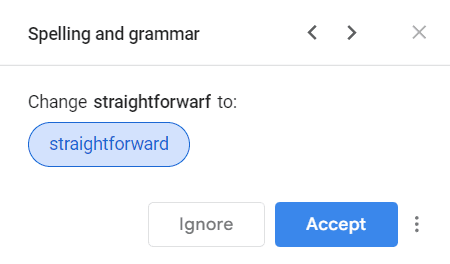
Source: Google Docs
Automating spellchecking can help you detect more typos and incorrectly hyphenated words than you could spot on your own.
Still, you should keep in mind that machine-powered spellcheckers don’t understand language nuances like people do, which means that you should approach them with some caution.
Although modern language tools can help you with sentence structure, grammar usage, and more, many writers agree that spellchecks still remain a pain point.

Source: Reddit
For instance, most spellcheckers are oblivious to context. They’ll warn you if you’ve misspelled a word, but they can’t tell you if you’ve used a word with an unsuitable meaning as long as it’s spelled correctly.
So, if you accidentally wrote apply protective firm instead of film, a regular spellchecking tool probably wouldn’t be of much use.
This problem goes the other way around, too: spellcheckers sometimes suggest changes even when you’ve spelled a word properly. That’s why you should never use the “Accept all suggestions” option.
Instead, you should use spellcheckers for typo detection, taking all other suggestions with a grain of salt.
If you’re looking to automate as much editing as you can, you might be interested in language assistants designed specifically for technical writing, such as Trinka.
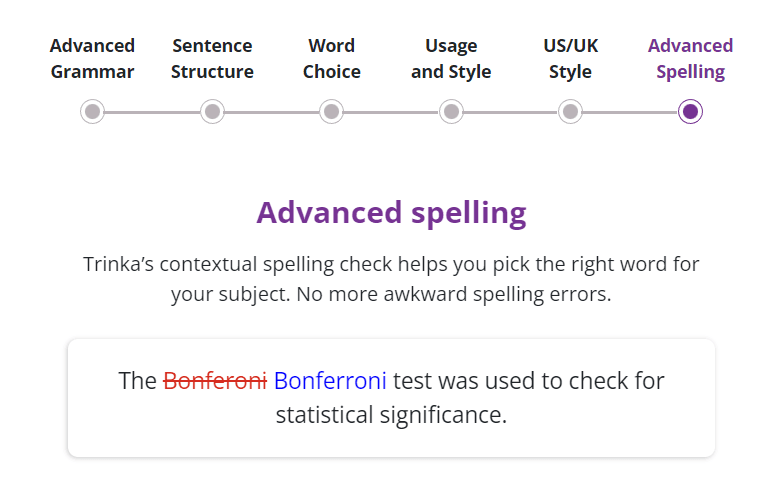
Source: Trinka
This tool uses AI for contextual spelling checks, among other features, making the vocabulary suggestions more relevant for the subject you’re writing about.
And speaking of spelling woes typical for technical writing, we have one final tip for you.
If you’re writing about specialized technology, your spellchecker might flag some of the industry terms as misspellings.
In that case, you could add the pieces of jargon you often use to your personal dictionary so that you don’t have to waste your time on convincing the spellchecker that NgFor really is a word.
Create an Editing Checklist
Have I already checked if all hyperlinks lead where they’re supposed to? Have I replaced all straight apostrophes with curly ones?
These are just some of the questions tech writers ask themselves throughout the self-review process. You can make the process more organized by creating an editing checklist.
A checklist will provide you with structure and ensure that you don’t forget any of the editing steps.
Let’s start with an example of an editing checklist here. Take a look at this excerpt from the checklist created by Enago, a language editing service.
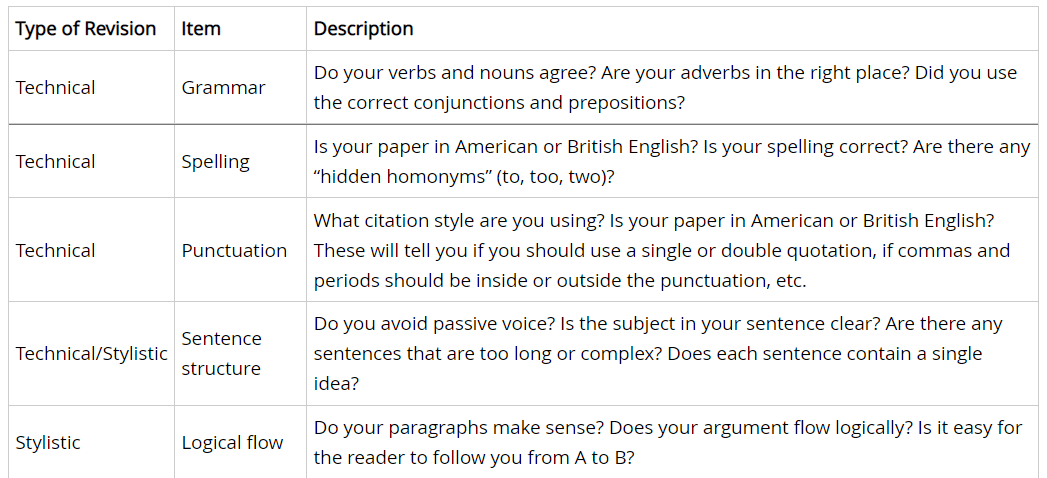
Source: Enago
As you can see, it covers standard editing practices, such as inspecting sentence clarity and the logical flow of thoughts.
You can find similar instructions in other ready-made editing checklists, too.
However, when it comes to technical writing and editing, you need a slightly different approach. The approach will depend on the type of technical documentation you’re writing and the requirements of the particular product you’re describing.
Even NASA suggests that professionals in the tech writing field create their own editing guidelines.
“Technical editing is a rather inconsistently defined endeavor: every organization imposes its own pragmatic requirements on the technical editor.”
So, if you often work on, say, user guides, you probably include a lot of images and figures in your writing.
If that’s so, you could add a section about visual elements to your checklist. Here’s what it could cover:
- All figures have captions
- No two captions or table titles are identical
- Images are resized to standard dimensions
- The annotation follows brand guidelines
You can adjust the checklist for each type of writing you encounter, be it creating API documentation, writing whitepapers, or something else.
Either way, creating a comprehensive list of technical and stylistic revision elements makes it easier to keep track of what you’ve checked and edited so that you can rest assured that you’ve polished the writing each time.
And if you have a checklist to guide you along the way, you’ll be able to deliver consistent results, project after project.
Read the Content With Fresh Eyes
Technical editing is not all about tools and processes. Sometimes, you can achieve better results just by changing how you approach editing.
In this section, we’ll see how reading the content with fresh eyes can help you notice errors and inconsistencies that could otherwise remain undetected.
If you’re nearing a deadline, you may feel tempted to move to editing immediately after you’re done writing. However, the information is then still fresh in your mind, and it’s very easy to miss the mistakes that require editing, even the obvious ones such as fixing spelling errors.
That’s why tech writers recommend taking a break first. For instance, tech writer Milica Maksimovic advises taking the following steps:
“Once you're done with the writing … go to sleep. Get out of the house. Read the same article tomorrow.”
The same applies to editing too much. Editing is an exhausting activity, and after some time, your focus drifts away, especially after doing multiple rounds of it.
Moreover, editing too much without taking a break can make you blind to your mistakes.
In the article titled “How Many Rounds of Editing Are Enough?”, Erin Wright warns writers that over-editing makes them too familiar with the text to notice flaws.
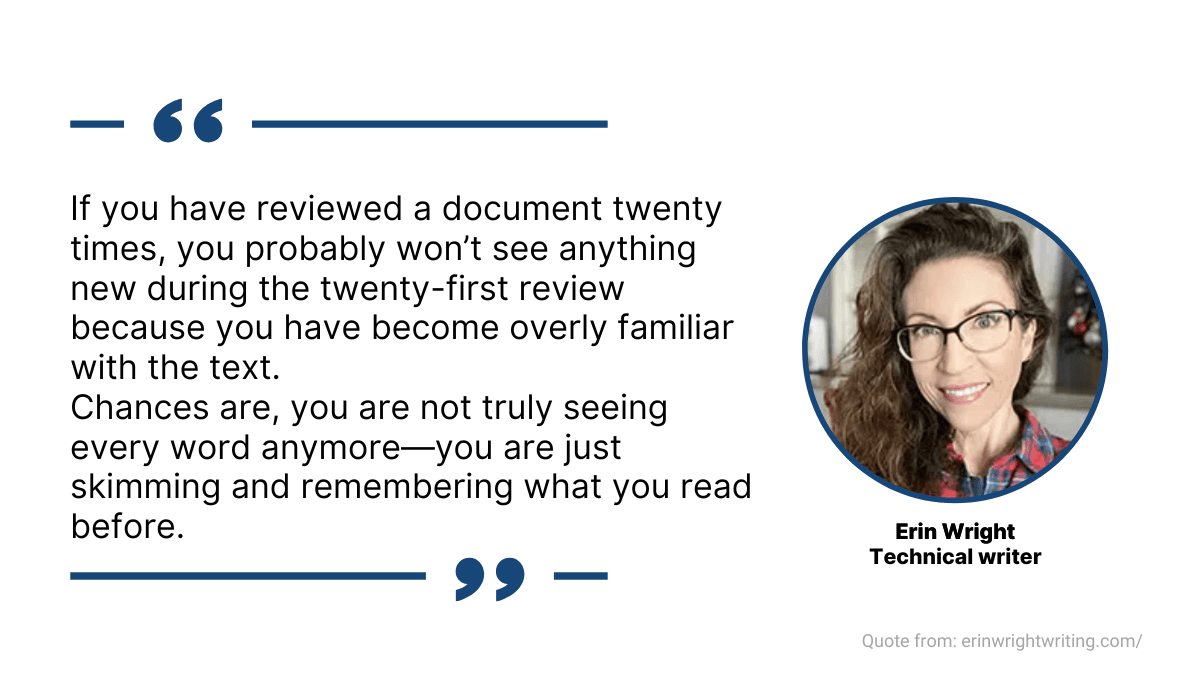
Source: Archbee
Wright suggests that one of the ways to overcome the issue is by getting a fresh pair of eyes from coworkers or freelance editors.
But if you don’t feel confident enough with the idea of delegating the editing work, we have two tips that could help you find a fresh perspective on your own writing.
First, you could try out a text-to-speech tool.
That approach puts you in the perspective of an observer, enabling you to assess the content more objectively.
An alternative option is to modify the appearance of your text by changing margins or fonts, a method that many tech writers find helpful.
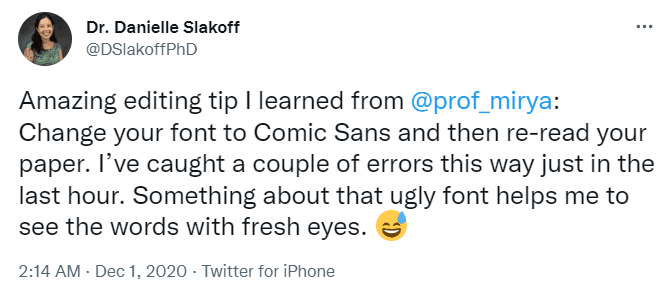
Source: Twitter
So, whether you take a break or change the appearance of your text, you’ll be able to observe the text with a clearer mind and from another point of view.
Most likely, you’ll find ten minutes of editing with the help of another person more effective than rereading the text for hours on end when you’re tired.
Give Yourself Time to Edit
No matter how good of an editor you are, condensing the entire process into a tight timeframe won’t allow you to spot and correct all the errors. That’s why you should dedicate as much time to editing as you can.
It’s especially important to give yourself enough time for revision if you’re also the person who has written the content because the writing process is already demanding and lengthy itself.
As the image below shows, there are many steps tech writers take before and after writing the text.
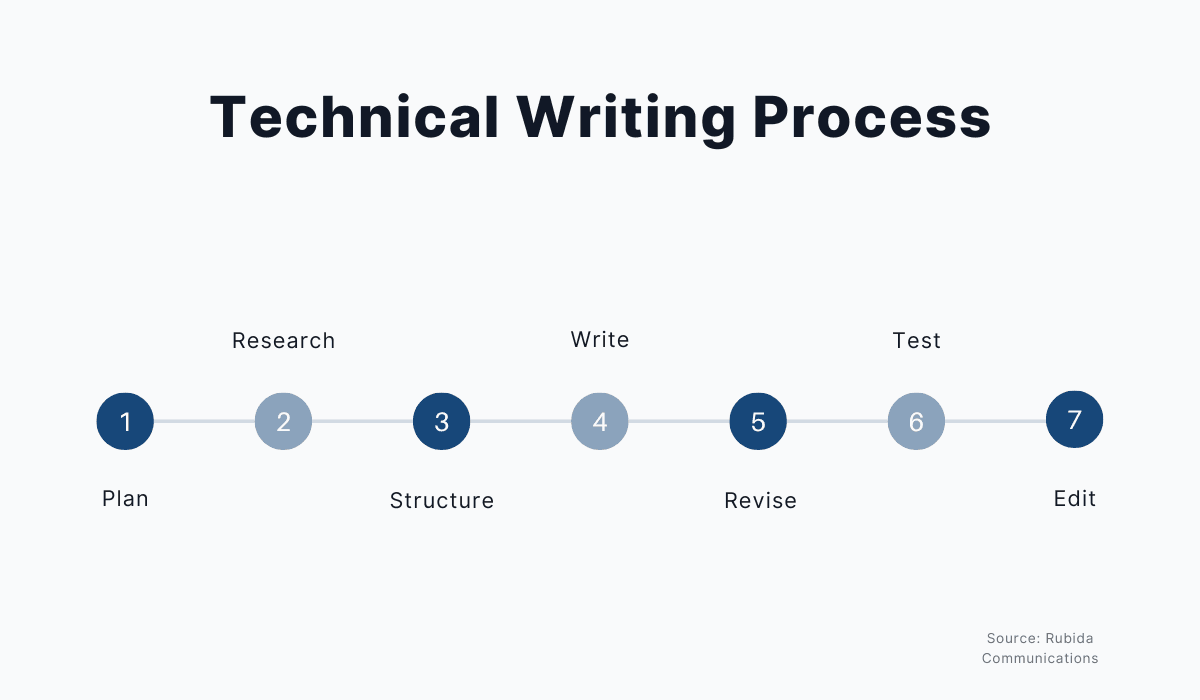
Source: Archbee
And once you’re finally done writing and testing, it’s understandable that you don’t have much energy for editing.
However, rushing this step can deteriorate the quality of your content because it makes you more likely to skim the document and miss the errors that are not so glaring.
Because of that, tech writers usually recommend leaving at least a day between writing and editing.
When you do start editing, make sure you go through the process meticulously, even if that means spending more time—that’s the only way to cover all stages of editing, from catching typos to formatting images.
So, when you take on a writing assignment, make sure you also plan for editing when determining a deadline.
Of course, spending too much time editing doesn’t necessarily mean delivering a better document, which is why you also need to know when to stop, or you’ll end up like this anguished tech writer from Twitter.
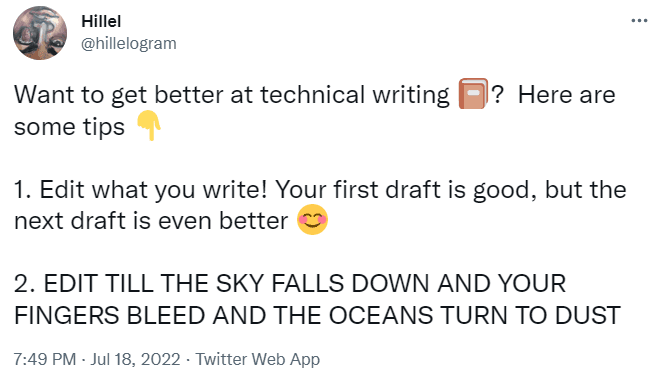
Source: Twitter
All in all, while you shouldn’t over-edit your content, it’s still better to leave aside plenty of time for revising and proofreading.
That will allow you to revisit the text when you’re feeling well-rested and approach editing with full attention.
Read It Out Loud
Lastly, before you hand the final version in, it’s helpful to read the document one more time, but this time out loud. Such a shift in perspective will help you ensure that no grammatical or logical errors have escaped scrutiny.
It’s worth noting that reading the text out loud isn’t a practice commonly taught in technical writing classes. Still, regardless of how strange the idea may seem at first, writers tend to include it into their editing practices once they experience how effective the method is.
Why is that so?
According to writers from this thread about self-editing, reading the content out loud can help you get into the mindset of an audience member, thus catching more errors.
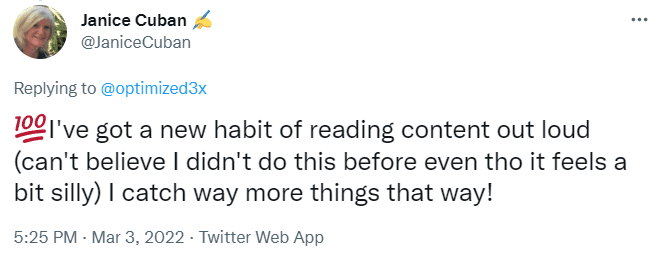
Source: Twitter
This editing method is particularly beneficial for catching errors related to the writing tone and punctuation.
Sentences that look acceptable in writing don’t always sound great when you read them out loud. In such cases, it’s better if you’re the one to discover clunky sentences, not your readers while they’re trying to follow instructions.
Reading out loud will also allow you to identify logical errors or incomplete explanations. For instance, this Redditor uses the practice when writing and editing research papers and advises their students to follow the same approach.

Source: Reddit
So, if your document aims to explain a procedure, reading out loud is an excellent way to test the clarity.
Bear in mind that you can still risk “autocorrecting” your faulty sentences while reading out loud without even noticing.
You can overcome this challenge by running the document through text-to-speech software.
Most modern writing tools have text-to-speech options included, but if you don’t like how robotic they sound, you might want to look into tools with human-sounding voices.
Find the voice you like, equip yourself with note taking-tools, and you’re ready to approach your text as an impartial observer.
Conclusion
As you can see, the answer to better technical editing is rarely more editing.
Instead, you can make the process more effective by strategically choosing work methods and tools.
If you adopt the tips we’ve outlined above, you’ll be able to create better content with less hassle—just remember to adjust the tips to your industry and type of content. We wish you good luck with editing!
Frequently Asked Questions
Prioritize accuracy, clarity, and consistency. Start by verifying facts, product details, and version numbers with reliable sources or a subject‑matter expert. Ensure the structure is logical, headings are scannable, and each step or concept flows cleanly. Tighten sentences, simplify jargon, and confirm that terminology is used consistently with your style guide. Run a spellcheck for typos, then check links, code snippets (do they compile/run?), screenshots (are they current?), figure captions, and alt text. Standardize formatting (lists, tables, units, hyphenation), and confirm visuals match the text. Finally, assess audience fit: is the content pitched at the right level and does it answer the user’s task or question?



